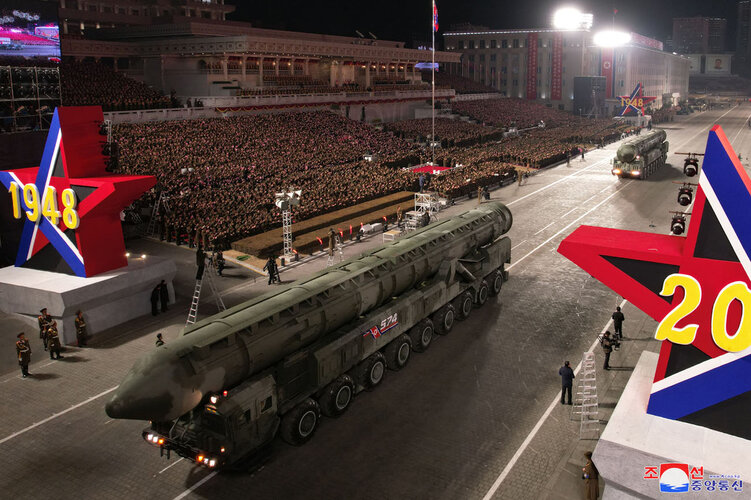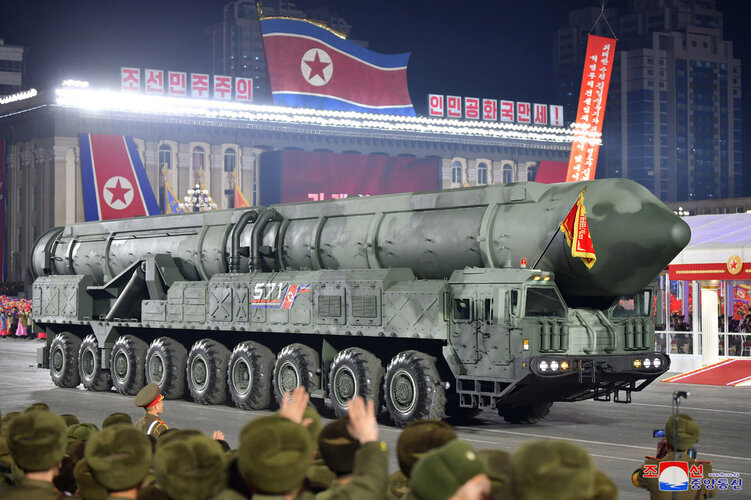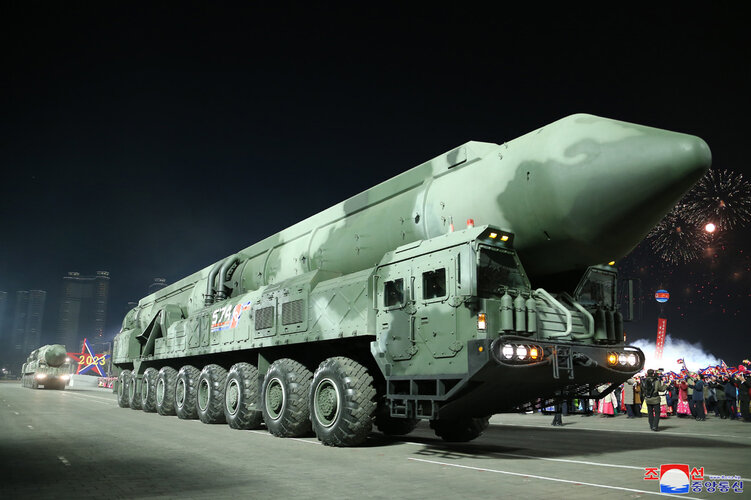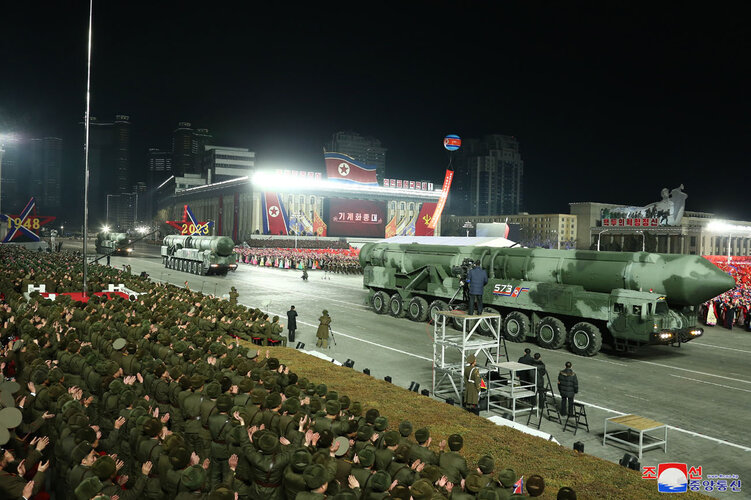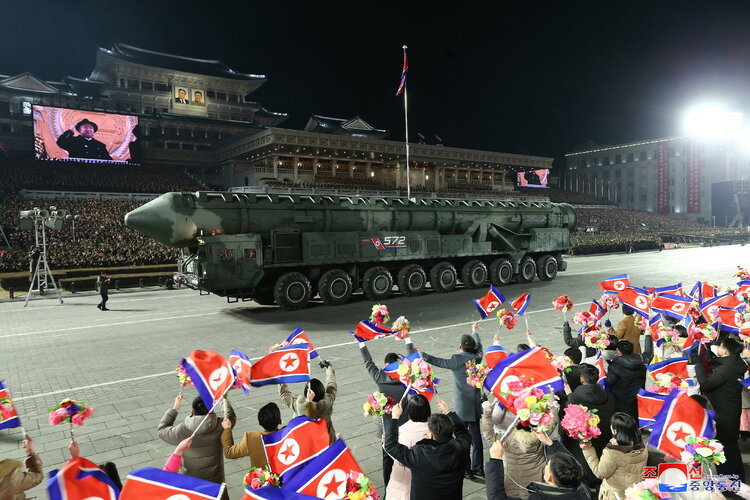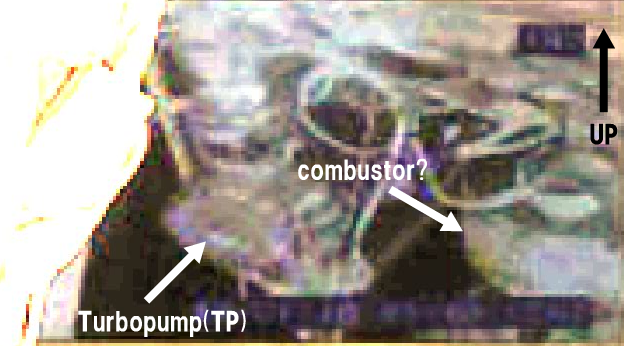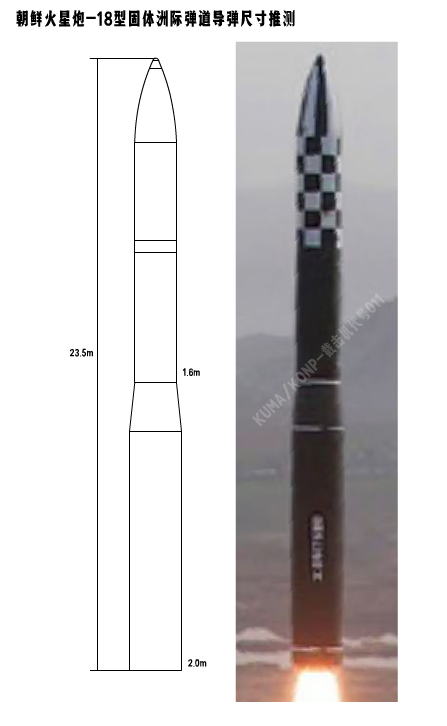You are using an out of date browser. It may not display this or other websites correctly.
You should upgrade or use an alternative browser.
You should upgrade or use an alternative browser.
New North Korean ballistic missiles
- Thread starter Deltafan
- Start date
- Joined
- 11 February 2010
- Messages
- 1,451
- Reaction score
- 1,956
How do one know if it's solid propellant tho. Other than apparent similarities to Russian topol or yars TEL.
Anyway having solid propellant ICBM's allows NK's to launch quicker and eliminate preparation required to fuel and maintaining the liquid fueled ICBM's in cost of reduced utility as space launchers in the future.
Anyway having solid propellant ICBM's allows NK's to launch quicker and eliminate preparation required to fuel and maintaining the liquid fueled ICBM's in cost of reduced utility as space launchers in the future.
BullpupRafale
ACCESS: Secret
- Joined
- 12 December 2021
- Messages
- 241
- Reaction score
- 237
Forest Green
ACCESS: Above Top Secret
- Joined
- 11 June 2019
- Messages
- 5,097
- Reaction score
- 6,684
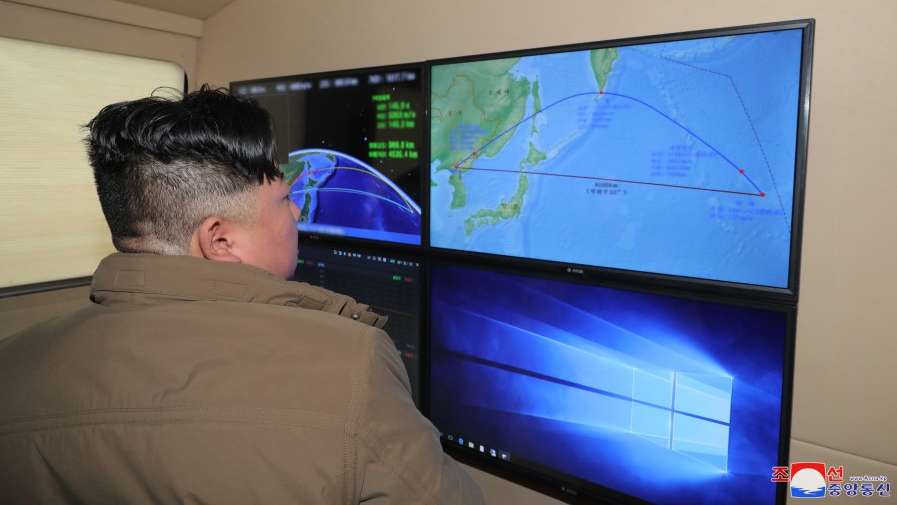
North Korea's missile launch over Japan shows increased payload, distance: exclusive analysis - Breaking Defense
In a new analysis, Ralph Savelsberg of the Netherlands Defence Academy warns that North Korea's October launch demonstrated the ability to deliver an almost 20 percent greater payload into Guam.
Dilandu
I'm dissatisfied, which means, I exist.
They published the video from test launches; the smoke was a solid-fuel one.How do one know if it's solid propellant tho. Other than apparent similarities to Russian topol or yars TEL.
To be exact, they already used storable liquid fuel, so refueling was not required, but it's clear that solid fuel made their ICBM much more durable and less maintenance-heavy. Also increase their mobility quite a lot.Anyway having solid propellant ICBM's allows NK's to launch quicker and eliminate preparation required to fuel and maintaining the liquid fueled ICBM's in cost of reduced utility as space launchers in the future.
- Joined
- 21 January 2015
- Messages
- 10,687
- Reaction score
- 12,347
U.S. intelligence analysts believe a recent military parade in North Korea "probably oversells" the threat its inter-continental ballistic missiles (ICBMs) pose to the United States, according to a leaked document purportedly from the U.S. government.
A brief, one-paragraph observation in one of the documents marked "Secret" and seen by Reuters noted that North Korea had paraded an unprecedented number of ICBM-class launchers at an event on Feb. 8that were "most likely carrying nonoperational systems."
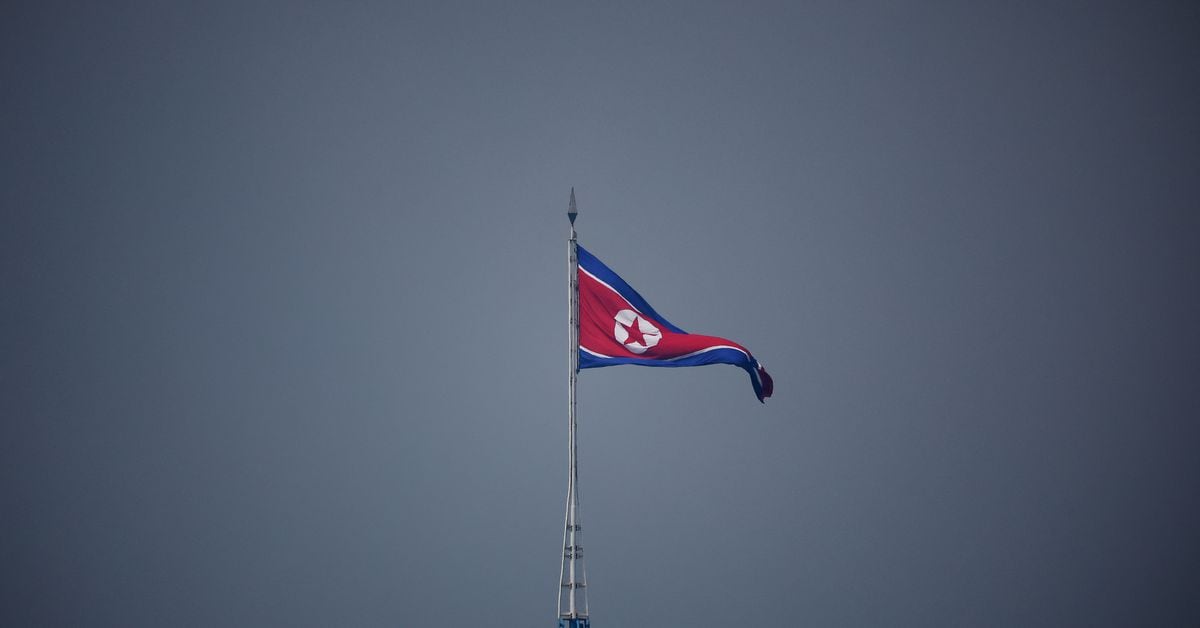
North Korea parade 'probably oversells' ICBM threat -leaked document
U.S. intelligence analysts believe a recent military parade in North Korea "probably oversells" the threat its inter-continental ballistic missiles (ICBMs) pose to the United States, according to a leaked document purportedly from the U.S. government.
BullpupRafale
ACCESS: Secret
- Joined
- 12 December 2021
- Messages
- 241
- Reaction score
- 237
This is just another Pentagon copium and or damage control since Hwasong-17 can certainly carry four reentry vehicles with nuclear warheads, with there being a dozen ICBMs of Hwasong-17 type thus can overwhelmed American ballistic missile defense system.U.S. intelligence analysts believe a recent military parade in North Korea "probably oversells" the threat its inter-continental ballistic missiles (ICBMs) pose to the United States, according to a leaked document purportedly from the U.S. government.A brief, one-paragraph observation in one of the documents marked "Secret" and seen by Reuters noted that North Korea had paraded an unprecedented number of ICBM-class launchers at an event on Feb. 8that were "most likely carrying nonoperational systems."
North Korea parade 'probably oversells' ICBM threat -leaked document
U.S. intelligence analysts believe a recent military parade in North Korea "probably oversells" the threat its inter-continental ballistic missiles (ICBMs) pose to the United States, according to a leaked document purportedly from the U.S. government.www.reuters.com
Also they can produce massive TELs thus once they finish development and testing of solid fuel ICBM then those will carry it.
After that dozen or two Hwasong-17 could be repurposed as space launch vehicles for 1000 to 1500 kilogram satellite into medium to low earth orbit. Outperforming considerably Soviet Kosmos-3M SLV that is of comparable size and weight. Although North Korea is upgrading Sohae SLV station so something like Tsyklon-3 that is basically R-36 ICBM in role of SLV could be launched from there.
Last edited:
Tone down the rhetoric a bit.This is just another Pentagon copium and or damage control
North Korea appears to have tested new type of missile that's easier to move and faster to fire
The first missile launch in a month saw Japan urge residents on the northern island to take shelter.
BullpupRafale
ACCESS: Secret
- Joined
- 12 December 2021
- Messages
- 241
- Reaction score
- 237
Won't be surprised if it turns out to be solid fuel ICBM.
BullpupRafale
ACCESS: Secret
- Joined
- 12 December 2021
- Messages
- 241
- Reaction score
- 237
View: https://twitter.com/nknewsorg/status/1646635146370744320
North Korea tested yesterday a solid fuel ICBM Hwasong-18.
North Korea tested yesterday a solid fuel ICBM Hwasong-18.
Forest Green
ACCESS: Above Top Secret
- Joined
- 11 June 2019
- Messages
- 5,097
- Reaction score
- 6,684
Fairly similar.




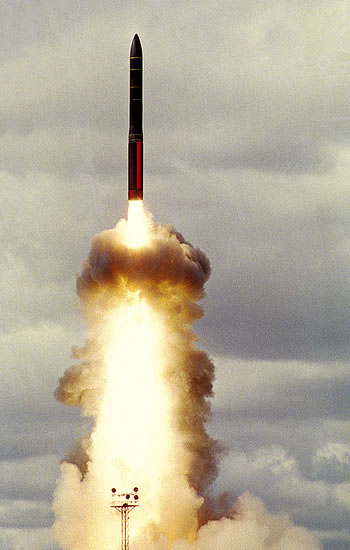
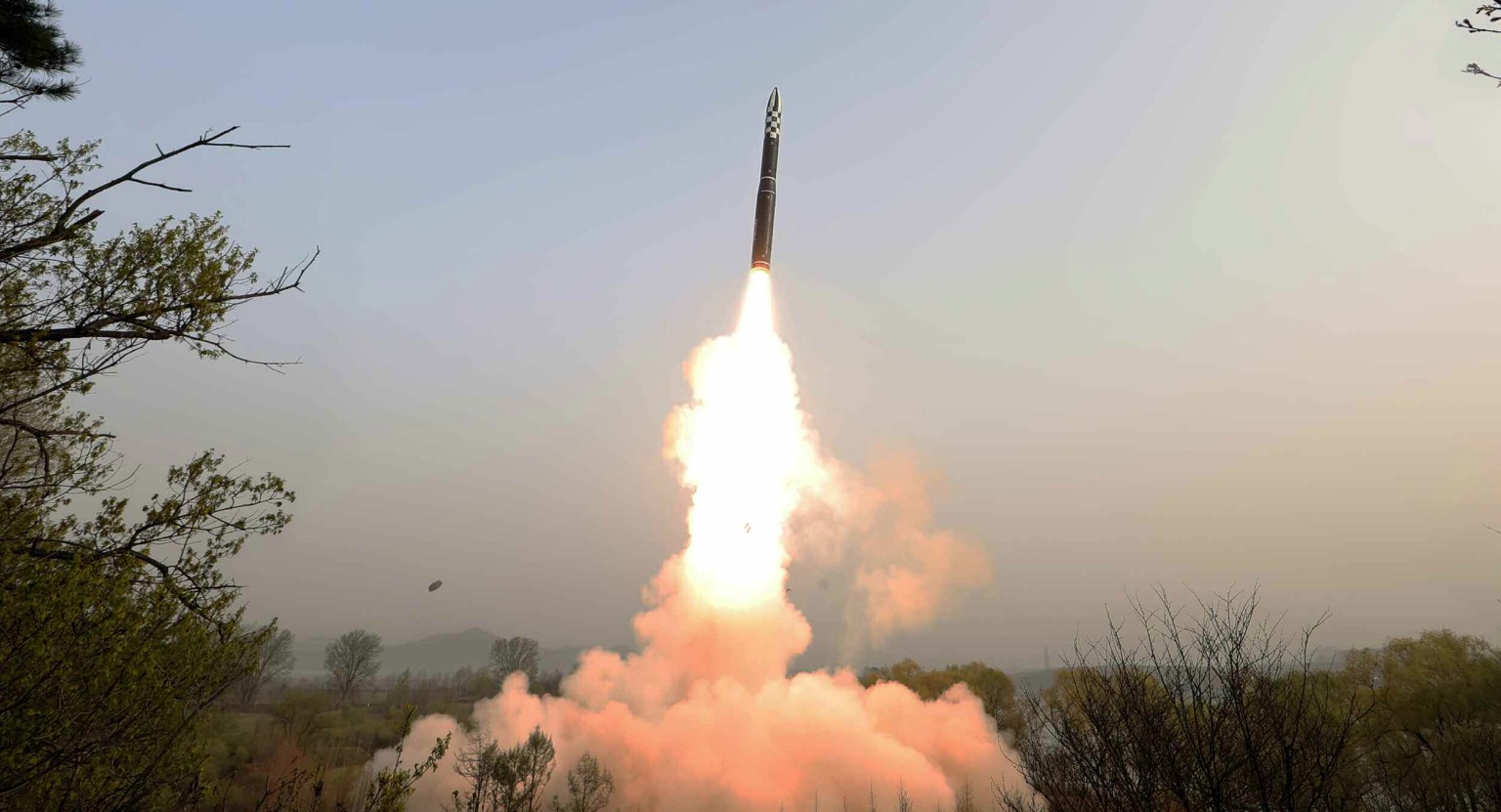
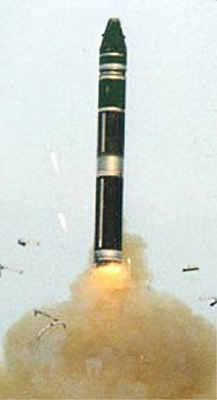
Forest Green
ACCESS: Above Top Secret
- Joined
- 11 June 2019
- Messages
- 5,097
- Reaction score
- 6,684
Well, it would be the MTCR in this case, but clearly when some people sign a treaty it's because they wish to restrict their counterpart, while for them it doesn't exist.Looks a whole lot like an RS-24. But hey, I'm sure it's just a coincidence. NPT after all.
- Joined
- 3 June 2011
- Messages
- 17,332
- Reaction score
- 9,069
Yep.Well, it would be the MTCR in this case, but clearly when some people sign a treaty it's because they wish to restrict their counterpart, while for them it doesn't exist.Looks a whole lot like an RS-24. But hey, I'm sure it's just a coincidence. NPT after all.
Forest Green
ACCESS: Above Top Secret
- Joined
- 11 June 2019
- Messages
- 5,097
- Reaction score
- 6,684
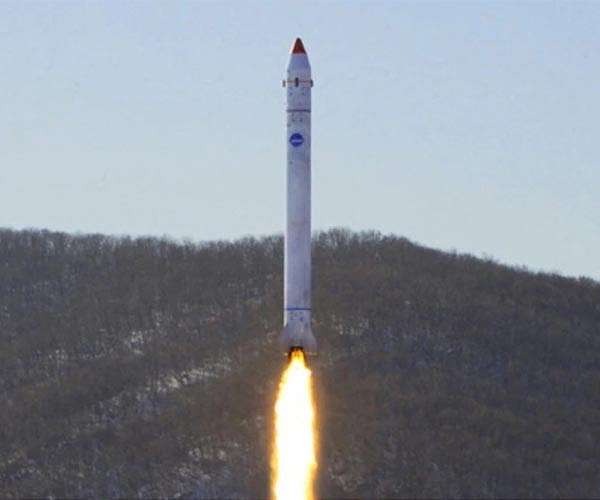
North Korea says it tested new solid-fuel ICBM
Seoul, South Korea (AFP) April 14, 2023 - North Korea said Friday it had successfully tested a solid-fuel intercontinental ballistic missile, hailing it as a key breakthrough for the country's nuclear counterattack capabilities.
www.spacewar.com
BullpupRafale
ACCESS: Secret
- Joined
- 12 December 2021
- Messages
- 241
- Reaction score
- 237
Looks like a Minuteman ICBM .....
This.
I mean, the US is clearly not going to have lent a hand, but the point is, it objectively has about as much in common with a Topol-M or Yars as it doas with a MM III.
- Joined
- 3 June 2011
- Messages
- 17,332
- Reaction score
- 9,069
I don't recall MM3 being launched from a TEL, have the rings pop-off like an RS-24, or ride on a "puck" like an SS-18.Looks like a Minuteman ICBM .....
This.
I mean, the US is clearly not going to have lent a hand, but the point is, it objectively has about as much in common with a Topol-M or Yars as it doas with a MM III.
Forest Green
ACCESS: Above Top Secret
- Joined
- 11 June 2019
- Messages
- 5,097
- Reaction score
- 6,684
The projected dimensions are almost identical to an RS-24 too.
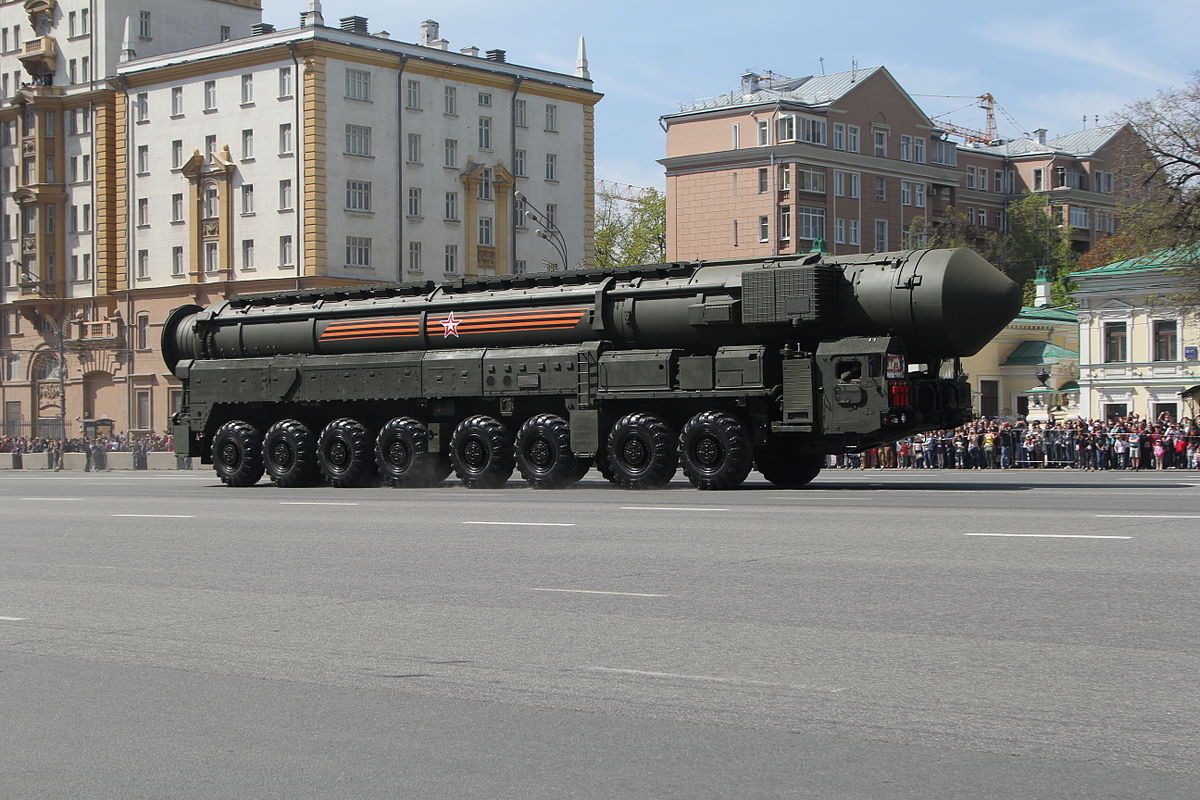
 en.wikipedia.org
en.wikipedia.org
RS-24 Yars - Wikipedia
A Tentative Fleet Plan
I really should change my personal text
- Joined
- 9 April 2018
- Messages
- 927
- Reaction score
- 1,859
On the case of these last two pictures, the North Korean Missile is liquid-fueled, with engines likely derived from the SS-9, parts of which they are known to have stolen from Ukraine, whilst the RT-23 is solid-fueled.Fairly similar.


The Solid-fueled North Korean ICBM is hardly a suprise, it's been predicted for more than a decade now, it was an inevitable follow-on from the large-diameter solid-rocket motors they had developed for the Pukguksong-series of SLBMs.
Forest Green
ACCESS: Above Top Secret
- Joined
- 11 June 2019
- Messages
- 5,097
- Reaction score
- 6,684
Stole it all the way from Ukraine huh? 
 So, an SS-18 propulsion system in an RT-23-alike missile. An 'inevitable' follow-on that happens to share dimensions with the RS-24.
So, an SS-18 propulsion system in an RT-23-alike missile. An 'inevitable' follow-on that happens to share dimensions with the RS-24.
BullpupRafale
ACCESS: Secret
- Joined
- 12 December 2021
- Messages
- 241
- Reaction score
- 237
Hwasong-17 is effectively Kosmos-3M.Stole it all the way from Ukraine huh?
So, an SS-18 propulsion system in an RT-23-alike missile. An 'inevitable' follow-on that happens to share dimensions with the RS-24.
Hwasong-18 is solid fuel like Topol/Minuteman.
A Tentative Fleet Plan
I really should change my personal text
- Joined
- 9 April 2018
- Messages
- 927
- Reaction score
- 1,859
It isn't RT-23-alike, it's liquid fueled, and powered by a pair of reverse-engineered RD-250s. If it was RT-23-alike, it would be Solid-fueled.Stole it all the way from Ukraine huh?
So, an SS-18 propulsion system in an RT-23-alike missile. An 'inevitable' follow-on that happens to share dimensions with the RS-24.
The solid-fueled "follow-on" is Pukguksong-derived.
As for stealing Ukrainian missile components, this is pretty widely reported:

North Korea ICBM success
How has North Korea managed to make such astounding progress with its long-range missile programme over the last two years? Here, Michael Elleman shares the first solid evidence that North Korea has acquired a high-performance liquid-propellant engine from illicit networks in Russia and Ukraine.
I'm not sure why it is surprising that an industrialised country with albeit, limited and illicit access to 21st century technology is capable of reproducing examples of 1940s (nuclear weapons) and 1960s (solid-fueled ICBMs) technologies, especially when they been seen to produce and test the various intermediate stages (for example the large diameter solid-fueled IRBMs of the Pukguksong-series).
BullpupRafale
ACCESS: Secret
- Joined
- 12 December 2021
- Messages
- 241
- Reaction score
- 237
Nuclear weapons that North Korea has is technologically far more recent than 1940s.
Especially when it is 200-300 kiloton explosive yield for 250-360 kilogram warhead.
RD-250 clone that North Korea made has 60 percent longer work cycle than original.
RD-250 at most could operate 120 seconds unlike North Korean clone can do190.
On top of that each nozzle can swivel such as RD-180 for example does.
Hence no need for inefficient verniers to steer the missile.
Especially when it is 200-300 kiloton explosive yield for 250-360 kilogram warhead.
RD-250 clone that North Korea made has 60 percent longer work cycle than original.
RD-250 at most could operate 120 seconds unlike North Korean clone can do190.
On top of that each nozzle can swivel such as RD-180 for example does.
Hence no need for inefficient verniers to steer the missile.
Forest Green
ACCESS: Above Top Secret
- Joined
- 11 June 2019
- Messages
- 5,097
- Reaction score
- 6,684
Your own source mentions Russia. And why would a small cash-strapped nation be developing not 1, not 2 but 3 separate types of ICBMs (Hwasong-15/17/18)? It doesn't even make sense.It isn't RT-23-alike, it's liquid fueled, and powered by a pair of reverse-engineered RD-250s. If it was RT-23-alike, it would be Solid-fueled.
The solid-fueled "follow-on" is Pukguksong-derived.
As for stealing Ukrainian missile components, this is pretty widely reported:

North Korea ICBM success
How has North Korea managed to make such astounding progress with its long-range missile programme over the last two years? Here, Michael Elleman shares the first solid evidence that North Korea has acquired a high-performance liquid-propellant engine from illicit networks in Russia and Ukraine.www.iiss.org
I'm not sure why it is surprising that an industrialised country with albeit, limited and illicit access to 21st century technology is capable of reproducing examples of 1940s (nuclear weapons) and 1960s (solid-fueled ICBMs) technologies, especially when they been seen to produce and test the various intermediate stages (for example the large diameter solid-fueled IRBMs of the Pukguksong-series).
Your own source mentions Russia.
Yeah - expressly in the context of *illicit* technology acquisition, not deliberate tech transfer (as with Ukraine, from where NK pretty clearly stole the Neptune anti-ship missile, for example). Hell, they've probably managed to copy ATACMS.
I'll give you one thing though, there has definitely been officially sanctioned sale of missile tech from Russia to the Peninsula in recent decades - albeit to the South! Their TBMs and cruise missiles are as close if not closer to Iskander-M & -K than their NK equivalents, the relation between S-350 and KM-SAM is not even being covered up and then there is the supersonic AShM...
Another (and perhaps the best) reason why tech transfer from Russia to NK is not going to be deliberate, it would have jeopardized what was (until 2022) a highly lucrative cooperation with SK.
EDIT:
And why would a small cash-strapped nation be developing not 1, not 2 but 3 separate types of ICBMs (Hwasong-15/17/18)? It doesn't even make sense.
That question is bass ackwards. Ask yourself why they would even think of attempting anything else, if they had been given access to the complete suite of know how on Topol-M (if that is even what it is)? The answer is that they haven't been provided that kind of comprehensive tech transfer (because the acquisition was illicit), and therefore have to hedge their bets. They can't be sure their copy is going to have a smooth development, so they need one or more less ambitious back-up plans or interim solutions.
Last edited:
Dilandu
I'm dissatisfied, which means, I exist.
Basically because they wanted their nuclear arsenal to be secure and not very costly to maintain.Your own source mentions Russia. And why would a small cash-strapped nation be developing not 1, not 2 but 3 separate types of ICBMs (Hwasong-15/17/18)? It doesn't even make sense.
* Hwasong-15 was essentially a stopgap measure; storable liquid-fueled ICBM that could be launched only from stationary positions. I.e. vulnerable to pre-emptive strikes. And since North Korea is quite small country, they are quite worried about their arsenal durability.
* Hwasong-17 is a solution; storable liquid-fueled ICBM, that could be transported and launched from mobile TEL. It allowed much better survivability than previous ICBM.
* Hwasong-18 is a next step - solid-fuel mobile ICBM, that would add reduced maintenance requirement to the already-achieved survivability.
Basically, North Koreans are firm followers of cost-efficiency. They prefer to spend money on development, but get the most cost-effective solution for actual deployment.
P.S. Also, their liquid-fuel ICBM program gave them a rather good foothold in terms of space-launching capabilities. I speculate that North Korea may be the next space power to achieve manned spaceflight (they already have technical capabilities to launch a Mercury-type capsule).
I cant agree moreBasically because they wanted their nuclear arsenal to be secure and not very costly to maintain.Your own source mentions Russia. And why would a small cash-strapped nation be developing not 1, not 2 but 3 separate types of ICBMs (Hwasong-15/17/18)? It doesn't even make sense.
* Hwasong-15 was essentially a stopgap measure; storable liquid-fueled ICBM that could be launched only from stationary positions. I.e. vulnerable to pre-emptive strikes. And since North Korea is quite small country, they are quite worried about their arsenal durability.
* Hwasong-17 is a solution; storable liquid-fueled ICBM, that could be transported and launched from mobile TEL. It allowed much better survivability than previous ICBM.
* Hwasong-18 is a next step - solid-fuel mobile ICBM, that would add reduced maintenance requirement to the already-achieved survivability.
Basically, North Koreans are firm followers of cost-efficiency. They prefer to spend money on development, but get the most cost-effective solution for actual deployment.
P.S. Also, their liquid-fuel ICBM program gave them a rather good foothold in terms of space-launching capabilities. I speculate that North Korea may be the next space power to achieve manned spaceflight (they already have technical capabilities to launch a Mercury-type capsule).
North Korea's technological development path is reasonable and solid.
The technical difficulty of liquid fuel reaching the intercontinental range is low, the cycle is short, and it can be expanded and applied in aerospace. While developing liquid missiles, they also carry out research and development of solid rockets. The vacancy in delivery capability during the solid research and development period can be filled by short-period liquid ballistic missiles.
Combination of long-term and short-term, and rapid iteration of short-cycle projects (such as Hwasong-12 to 14, hwasong-15 to 17), so that there will not be too much gap in delivery capability throughout the missile development cycle
And as far as I know, they export technology and missile entities to get funds to advance technology development, which is a virtuous cycle.
Forest Green
ACCESS: Above Top Secret
- Joined
- 11 June 2019
- Messages
- 5,097
- Reaction score
- 6,684
So strange that Putin would ask for Viktor Bout to be released if he were trying to clamp down on such illicit networks.Yeah - expressly in the context of *illicit* technology acquisition, not deliberate tech transfer
Last edited:
BullpupRafale
ACCESS: Secret
- Joined
- 12 December 2021
- Messages
- 241
- Reaction score
- 237
Russia exported Kh-35 anti ship cruise missile to North Korea in 2005, a year before first nuclear test.
North Korea also has joint research and development agreement with Iran for both civilian and military technologies.
Not sure if baseline Kh-35 produced by Russia since early 2000s had TRDD-50 low bypass turbofan jet engine for propulsion.
Even if it did not there is Kh-101 that crashed in Iran in 2015 that could be source of miniature advanced low bypass turbofan engine.
Hence would explain long range of 2000 kilometers for Hwasal-2 ground launched strategic land attack cruise missile.
Since it is more fuel efficient than far larger RD-33 turbofan engine used on Mikoyan-Gurevich 29 fighter jet.
As for Hwasong-17 as SLV effectively allows them to send up to 2000 kilograms into low earth orbit.
More than enough for manned capsule capable of surviving reentry into atmosphere.
What is interesting involving Hwasong-18 is that thrust vector control are not done by jet vanes that redirect exhaust inefficiently.
Instead flexible gimballed nozzle that can swivel in any direct is used thus doesn't obstruct flow of the exhaust.
If they can downscale it to smaller missiles, they can improve range of those considerably.
EDIT:
Jeffrey Lewis and his colleagues just released a podcast on North Korean test of Hwasong-18.
North Korea also has joint research and development agreement with Iran for both civilian and military technologies.
Not sure if baseline Kh-35 produced by Russia since early 2000s had TRDD-50 low bypass turbofan jet engine for propulsion.
Even if it did not there is Kh-101 that crashed in Iran in 2015 that could be source of miniature advanced low bypass turbofan engine.
Hence would explain long range of 2000 kilometers for Hwasal-2 ground launched strategic land attack cruise missile.
Since it is more fuel efficient than far larger RD-33 turbofan engine used on Mikoyan-Gurevich 29 fighter jet.
As for Hwasong-17 as SLV effectively allows them to send up to 2000 kilograms into low earth orbit.
More than enough for manned capsule capable of surviving reentry into atmosphere.
What is interesting involving Hwasong-18 is that thrust vector control are not done by jet vanes that redirect exhaust inefficiently.
Instead flexible gimballed nozzle that can swivel in any direct is used thus doesn't obstruct flow of the exhaust.
If they can downscale it to smaller missiles, they can improve range of those considerably.
EDIT:
Jeffrey Lewis and his colleagues just released a podcast on North Korean test of Hwasong-18.
- Joined
- 27 September 2006
- Messages
- 5,744
- Reaction score
- 5,633
Building a solid fuel rocket is one thing. Testing a warhead and reentry vehicle and accurate target calibration requires a long test range and infrastructure.
Just firing in the direction of the Sea of Japan and hoping for the best does not suggest North Korea does this?
Just firing in the direction of the Sea of Japan and hoping for the best does not suggest North Korea does this?
BullpupRafale
ACCESS: Secret
- Joined
- 12 December 2021
- Messages
- 241
- Reaction score
- 237
So highly lofted missile launches do not matter nor do they count at all?
When going up several thousand kilometers above atmosphere...
...and having extremely sharp straight down reentry.
When going up several thousand kilometers above atmosphere...
...and having extremely sharp straight down reentry.
BullpupRafale
ACCESS: Secret
- Joined
- 12 December 2021
- Messages
- 241
- Reaction score
- 237
False, read what you wrote.
Similar threads
-
North Korean newest Ballistic Missile fire from Train
- Started by Michel Van
- Replies: 6
-
New Plan for Sub Launched Conventional Ballistic Missile for PGS Mission?
- Started by bobbymike
- Replies: 0
-
-
-

